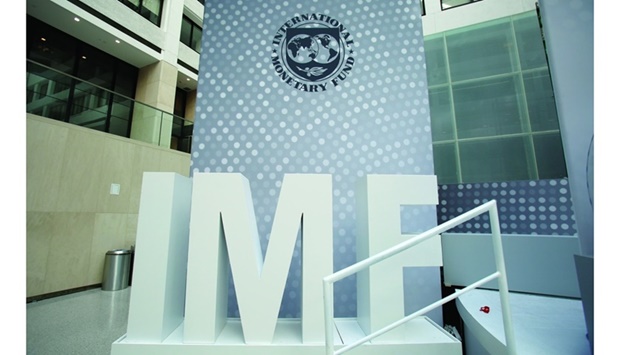Qatar's banks remain “well-capitalised and liquid” but “continued diligence in banking supervision is required to safeguard financial stability”, according to the International Monetary Fund (IMF).
By end-2021, Tier 1 capital ratio rose to 18%, liquidity was abundant supported by the Qatar Central Bank’s (QCB) zero-interest repo, and bank profitability remained stable, IMF said in its Article IV consultation with Qatar.
Non-performing loans (NPLs) ratio inched up to 2.4%, but loans under moratoria were not subject to reclassification yet.
The system-wide loan-to-deposit (LTD) ratio reached 125%, reflecting sustained credit growth and further increase in banks’ already sizeable foreign liabilities (39% of total liabilities, or 110% of GDP).
While banking sector indicators appear healthy, the potential asset quality problems could have been masked by the pandemic support measures, it said, adding that the analysis suggests that NPL ratios could have been "slightly higher" in 2021 without the loan moratorium.
"The QCB should proactively monitor banks’ compliance with provisioning and capital requirements, and require plans to deal with NPLs and restore capital buffers as needed," the report said.
Continuing stress testing and information sharing among the financial supervisors could help identify vulnerabilities and guide regulatory actions, according to it.
IMF said banks (in Qatar) have been increasingly reliant on foreign funding due to its longer tenor and lower cost.
As a result, several banks have LTD ratios well above the 100% prudential limit and the net stable funding ratios (NSFR) below the required level, though they comply with the liquidity coverage ratio (LCR) prudential limit.
To address these concerns, the QCB has recently adjusted reserve requirements in foreign currencies for non-resident deposits and the calculation of LCR and NSFR ratios using more conservative assumptions of outflow run-off rates, and modified the LTD calculation to include banks’ borrowing with different maturities.
The report said more forceful implementation of prudential regulations, development of domestic stable funding and a reduction of sovereign-bank nexus will help alleviate the risks.
Time-bound plans and their strict implementation are needed to reduce banks’ exposure to external financing and align their LTD and NSFR ratios with the prudential limits, it said. "Deepening financial markets could help increase domestic stable funding as well as promote term savings, widen borrowing and investment opportunities, and achieve greater financial inclusion," it said.
The authorities could consider issuing long-term capital instruments to create a benchmark yield curve to facilitate saving and lending in domestic currency, IMF suggested. Fiscal prudence and less domestic borrowing by the public sector would alleviate the sovereign-bank relation and avoid crowding out of private credit.
It is also crucial to put in place an adequate bank resolution framework and financial safety nets, such as emergency liquidity assistance and deposit insurance scheme.
By end-2021, Tier 1 capital ratio rose to 18%, liquidity was abundant supported by the Qatar Central Bank’s (QCB) zero-interest repo, and bank profitability remained stable, IMF said in its Article IV consultation with Qatar.
Non-performing loans (NPLs) ratio inched up to 2.4%, but loans under moratoria were not subject to reclassification yet.
The system-wide loan-to-deposit (LTD) ratio reached 125%, reflecting sustained credit growth and further increase in banks’ already sizeable foreign liabilities (39% of total liabilities, or 110% of GDP).
While banking sector indicators appear healthy, the potential asset quality problems could have been masked by the pandemic support measures, it said, adding that the analysis suggests that NPL ratios could have been "slightly higher" in 2021 without the loan moratorium.
"The QCB should proactively monitor banks’ compliance with provisioning and capital requirements, and require plans to deal with NPLs and restore capital buffers as needed," the report said.
Continuing stress testing and information sharing among the financial supervisors could help identify vulnerabilities and guide regulatory actions, according to it.
IMF said banks (in Qatar) have been increasingly reliant on foreign funding due to its longer tenor and lower cost.
As a result, several banks have LTD ratios well above the 100% prudential limit and the net stable funding ratios (NSFR) below the required level, though they comply with the liquidity coverage ratio (LCR) prudential limit.
To address these concerns, the QCB has recently adjusted reserve requirements in foreign currencies for non-resident deposits and the calculation of LCR and NSFR ratios using more conservative assumptions of outflow run-off rates, and modified the LTD calculation to include banks’ borrowing with different maturities.
The report said more forceful implementation of prudential regulations, development of domestic stable funding and a reduction of sovereign-bank nexus will help alleviate the risks.
Time-bound plans and their strict implementation are needed to reduce banks’ exposure to external financing and align their LTD and NSFR ratios with the prudential limits, it said. "Deepening financial markets could help increase domestic stable funding as well as promote term savings, widen borrowing and investment opportunities, and achieve greater financial inclusion," it said.
The authorities could consider issuing long-term capital instruments to create a benchmark yield curve to facilitate saving and lending in domestic currency, IMF suggested. Fiscal prudence and less domestic borrowing by the public sector would alleviate the sovereign-bank relation and avoid crowding out of private credit.
It is also crucial to put in place an adequate bank resolution framework and financial safety nets, such as emergency liquidity assistance and deposit insurance scheme.


